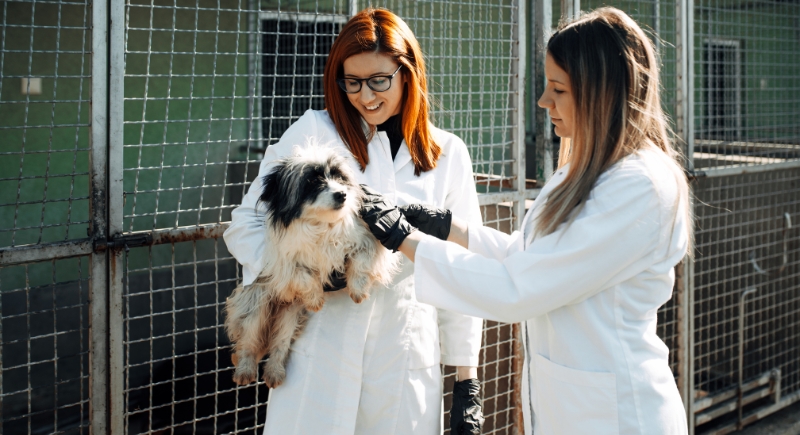Why Animal Shelters Are Being Flooded With Pets People Can No Longer Afford
The number of pets entering shelters has climbed to levels staff say they haven’t seen before. Rising food costs, steep veterinary bills, and limited housing options are pushing families to surrender animals they love but can’t afford. In New York City, the public system hit a breaking point this summer when Rocky, an 11-year-old dog, became the 1,000th animal in its care.
Similar scenes are playing out across the country. Shelters from Boston to Los Angeles are packed, volunteers are stretched thin, and families are arriving with animals they never wanted to give up. The pressures trace back to rent hikes, inflation, and the long tail of the pandemic, leaving people and pets caught in the same squeeze.
While the situation sounds grim, there’s also a lighter side worth exploring. Communities are stepping in, creative solutions are taking shape, and shelters are finding ways to support both pets and people. Here’s a closer look at the mix of factors crowding shelters and the efforts to keep tails wagging and whiskers twitching in homes where they belong.
The Price Tag of Pet Care

Image via Getty Images/didesign021
Veterinary costs have skyrocketed in the past decade, climbing more than 60% since 2014. Add in a 45.5% jump in dog food prices since 2020, and the math becomes overwhelming for many families.
A January 2025 survey found that 42% of pet owners cited food prices as a serious challenge, while 39% said vet bills were a strain. At shelters like PAWS in Lynnwood, Washington, staff say they see at least one owner surrender each day simply because people can’t cover basics like spay and neuter surgeries. Even toys and treats, once casual purchases, now feel like luxuries.
For owners who can no longer balance those costs, surrendering becomes the last available option. Shelter workers emphasize that it’s not a lack of love, but financial limits that push families into heartbreaking decisions. In many cases, surrendering is seen as an act of care because owners ensure a pet gets the medical attention or stable food supply their human can no longer guarantee.
Housing Hurdles for Pet Owners
The surge in surrenders is also about housing. Rising rents, breed restrictions, and pet deposits add up quickly. The NOAH Center in Washington now keeps a waitlist for surrenders because there simply isn’t space, a policy that sometimes buys owners time to work things out. Associate Director Rachel Bird notes that moving is especially tough: not every landlord welcomes four-legged tenants, and “pet rent” is another cost that can push families to the brink.
Nationally, the situation mirrors what’s happening in Lynnwood. In Charlotte, North Carolina, owner surrenders rose 43% compared to last year, with many citing housing instability. In New York, one-third of the animals in city shelters were given up after families lost housing or moved to places where pets weren’t allowed.
Pandemic Puppies and Behavioral Challenges

Image via Getty Images/animalinfo
The pandemic pet boom brought joy to millions, but it also set up new challenges. Spay and neuter surgeries were put on hold as nonessential, which led to a surge in litters. Backyard breeders only added to the issue, and unfortunately, with so many animals entering households, training often lagged behind.
Now, dogs that spent their early lives glued to their owners during lockdowns are struggling with separation anxiety and behavioral issues as people return to offices. Moreover, shelters report a growing number of dogs being surrendered because they are difficult to manage.
Families who adopted during lockdown now find themselves dealing with dogs that never learned how to be alone. Torn furniture, knocked-over trash, and restless behavior have become common reasons for surrender. At the same time, more adopters want animals that are already calm and trained, leaving these younger, high-energy dogs with fewer options.
The Overcrowding Crisis
Numbers tell the story. An estimated 5.8 million animals landed in shelters last year, according to Shelter Animals Count. In New York, shelters reached a breaking point in July 2025, which suspended most intakes except emergencies after hitting capacity with 1,000 animals.
Across the country, shelters are stacking kennels, using hallways as temporary housing, and partnering with rescue groups to manage the overflow. In Tennessee, one shelter described itself as “drowning” in dogs.
Length of stay is also on the rise. Instead of three days to adoption, some animals now spend months or even a year waiting for a home. While euthanasia is avoided whenever possible, the overcrowding strains staff, volunteers, and budgets. Municipalities like New York City have stepped in with emergency funding, $1 million in July, but leaders stress that more systemic solutions are needed.
Finding Ways Forward

Image via Getty Images /Group4 Studio
Even as shelters face impossible numbers, creative efforts are emerging. Free food banks, vaccine clinics, and vet vouchers help families delay or avoid surrendering their pets. Some shelters encourage private rehoming by connecting pet owners directly with adopters to reduce pressure on facilities. Fostering remains a crucial lifeline, and shelters are urging more people to open temporary homes to animals in need.